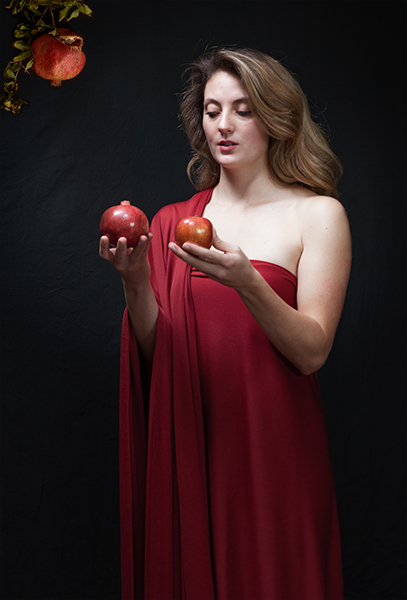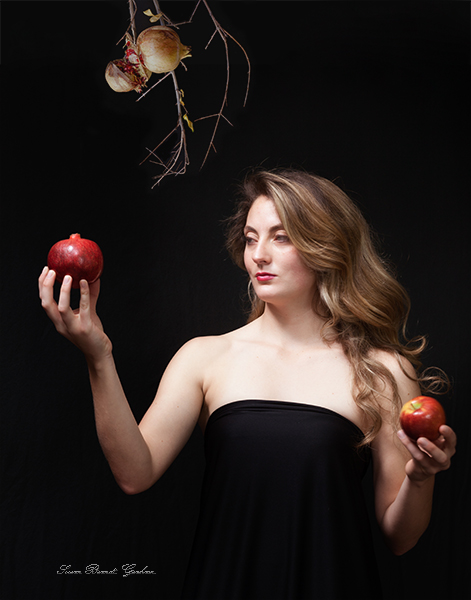Persephone in the Underworld
Persephone in the Underworld – how would you imagine it? I don’t mean when she was initially violently abducted from her beautiful springtime world on Earth by Hades, with the consent of her father, Zeus. I mean more when she returned year after year, as wife of Hades and Queen of the Underworld, at a time that would be Winter on Earth.
So many variations exist regarding that part of the myth that I felt free to pick anything I wanted. Some versions have Persephone despising Hades forever, but those are not the more common versions. Interestingly, many versions note that of the Greek god and goddess couples, they were the “most faithful” to one another, for whatever that is worth.
By most versions, Persephone and Hades did not have children together. Persephone had two, maybe three children, with two generally reported to be the result of rape by her father, Zeus. One more example of violence against women from world literature. It may be that ultimately her time in the Underworld with Hades in Winter, in the role of wife and Queen of the Underworld, was a welcome relief from wondering when and where her father would appear in her life on the beautiful Spring on Earth. Who knows?
Most note that she performed the entire range of her duties as Queen of the Underworld well.
So, was Persephone a beautiful trophy wife for Hades, but one in whom he had little to no interest beyond owning her once he had her? Did Persephone despise him every moment she was in the Underworld, counting every day until she could leave for the cyclic return to Earth? Did they fall into some kind of known routine, like old married couples, where they knew each other and what to expect, with a generally acceptable accommodation toward one another? Given artistic license, I’ve chosen to interpret the relationship through my imagination. And, at least in this post, I am not going to address her first Winter in the Underworld after he abduction by Hades. In this post I am looking more at her subsequent Winters, remembering that in earlier posts she chose to eat the pomegranate seeds, knowing she would be bound to Hades as his wife and required to return in a yearly cycle. The flip side of that coin is that she also knew she would have time each year on her own, as Goddess of Spring, with none of the duties of Queen of the Underworld. I said it in an earlier post, but I’ll say it again – I think of Georgia O’Keeffe’s marriage, and her time away on her own in New Mexico.
I have chosen to represent Persephone, after the first Winter in the Underworld, as in a fulfilling relationship with her husband, in the choice she made. (Call me Pollyanna.) These images are my representation of Persephone in the Underworld.











